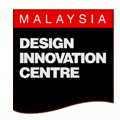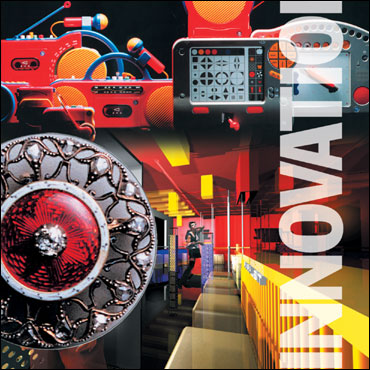The Japanese worked at it very seriously from the early 1950s, soon after the Second World War. The South Koreans pushed it very hard from the 1970s.
The two countries, like Taiwan and Hong Kong that followed them along a similar route, have long passed that phase in their development.
These countries were once known for their ability and capacity to imitate and adapt products.
The Japanese did it so well that being very good at adaptation came to be recognised as an asset. Adaptation is already part of the process of innovation.
Innovation is simply the process of generating ideas and using them to replace what is already in the marketplace with something that works better, lasts longer or is more appealing to a wider spectrum of consumers or a targeted niche, so as to increase market share. In other words, innovation strengthens the capacity to compete.
It is no surprise, therefore, that the economically most successful and competitive countries in the world are also the most innovative.
In the 2003 Innovation Sub-Index compiled by the World Economic Forum, the top ten countries include the United States, Sweden, Switzerland and Germany. Those from Asia on the list are Japan, South Korea and Taiwan. Malaysia came in at 41.
Many of the most successful countries are known around the world for a few high quality and innovative products; sometimes just one, like Finland’s Nokia mobile phone. And who has not heard of Switzerland’s Rolex watch.
South Korea’s Samsung took the mobile phone and further popularised it by adding a miniature camera and pleasing ring tones in it. Japan’s Sony shrank the bulky radio cassette players that young Americans once carried around with them into the Walkman that fitted into the pockets of fashion jeans and office attire.
Once these countries are widely accepted as being the best and most innovative in one thing, they quickly gain a reputation of being the best in many other things as well.†
In today’s competitive global market environment, Malaysia has to short circuit the process from adaptation and move very quickly into innovation.
And that we can. Malaysians are naturally gifted, with creative abilities and inclinations. The evidence is everywhere. We make good shoes, clothes, furniture, electrical products, even sports goods and automotive accessories.
In education, Malaysia is already the centre for foreign students among developing countries. Going forward, we should be more innovative and introduce courses and programmes that are recognised as the best in the developing world.
The process of innovation
The journey to innovation starts at the very top.
The inclusion of “Innovation” as part of the Science and Technology portfolio is therefore a very good move that the Government has made.
In a company, the chief executive has to commit its resources to develop a blueprint that will move it into a position where it can originate and innovate. He has to ensure that the people are trained, the mindset prepared and the road map in place.
The process will involve everyone in the company – the finance and business planners, product designers and production supervisors, market researchers and sales promoters.
The whole company must adopt and accept the culture of innovation, live the culture in all aspects, and practised it every day everywhere in the business. The chain must be complete. The commitment must
be consistent.
An innovative company is naturally one that is dynamic. It will have a responsive management system that is constantly in touch with shifting market trends. It has built-in flexibility that allows it to consistently stay ahead of the competition.
To be certain, the process of innovation must also involve the people who run the Government’s approval system.
They must understand the competitive nature of business. They must know the speed at which the private sector must move in order to remain in competition, especially in a globalised environment.
They must support and facilitate the private sector to enable it to be at its competitive best; to be able to gain access to new markets in the fastest time. In the building of competitiveness, the Government must work closely with the private sector.
Protection of intellectual property vital
If it takes forever to patent a design, the process is not going to work. By the time it is patented, the design is already out of date.
But without the protection of the law, no one will go into the market with a new design. For instance, a chair with a successful design can be manufactured in large numbers and sold all round the world, if you are able to protect that design.
Some furniture designers have become well known for a single product, and they are able to sell that product or the range to the world over and over again. They just innovate as they go along.
The low level of Malaysian ownership of patents speaks volume of the low level of interest among Malaysians in creating original products, original designs.
Protection of intellectual property as far as music, video and software are concerned is much talked about.
But little is heard about protecting the designs of furniture, electrical goods, plastic and rubber products.
If the process is slow or inefficient, we will not encourage designers to really go for it, to invest a lot of time, effort and money to produce original designs.
When business people are driving hard to compete, they need the whole system working for them, not holding them back.
An ‘Enterprise Malaysia’ common platform will help by pulling together all government agencies and the private sector to work as a team.
An “Enterprise Malaysia” platform will enable us to integrate as a country brand; to be more strategic in the way we compete as a nation, and the speed at which we must move as a team.
Innovation as the driver of quality
Malaysian companies must acquire the capacity to produce higher quality work. They must be prepared to upgrade their staff, to bring in people with new skills, new knowledge, new fluency in the use of technology.
Many must now redesign their business and give it a lift from where they are now to a more competitive level, to the level that will enable them to compete successfully globally.
Right now, with a third world mentality, many companies are in business to do things faster, and cheaper. It is not about doing it better. Very often, it is about cutting corners.
Not often do we see a company that believes it can improve on something and still sell it even if it is done at a higher cost.
The lack of a quality culture is apparent in practically every industry: expensive hotels that have poorly trained staff; smartly designed buildings that have dirty toilets; great-looking bread toasters that don’t work after just days.
We have to get all Malaysian companies to believe that innovation is the very ingredient that will drive productivity and quality; that it will help them to upgrade their company, expand their business, increase their profitability and help them build markets all over the world.
If the commitment is there, so will be the focus. And success will follow.

